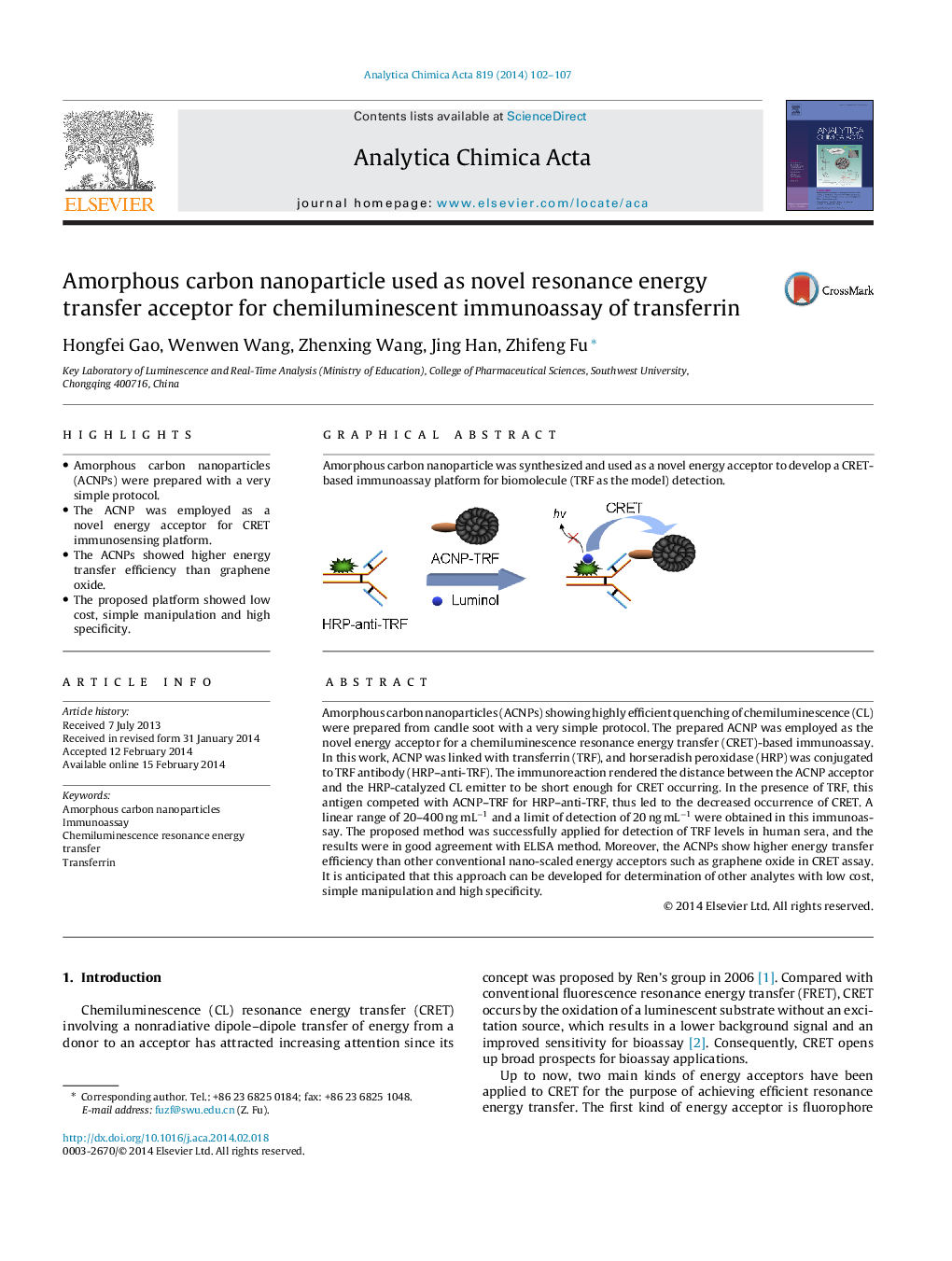| Article ID | Journal | Published Year | Pages | File Type |
|---|---|---|---|---|
| 1163998 | Analytica Chimica Acta | 2014 | 6 Pages |
•Amorphous carbon nanoparticles (ACNPs) were prepared with a very simple protocol.•The ACNP was employed as a novel energy acceptor for CRET immunosensing platform.•The ACNPs showed higher energy transfer efficiency than graphene oxide.•The proposed platform showed low cost, simple manipulation and high specificity.
Amorphous carbon nanoparticles (ACNPs) showing highly efficient quenching of chemiluminescence (CL) were prepared from candle soot with a very simple protocol. The prepared ACNP was employed as the novel energy acceptor for a chemiluminescence resonance energy transfer (CRET)-based immunoassay. In this work, ACNP was linked with transferrin (TRF), and horseradish peroxidase (HRP) was conjugated to TRF antibody (HRP–anti-TRF). The immunoreaction rendered the distance between the ACNP acceptor and the HRP-catalyzed CL emitter to be short enough for CRET occurring. In the presence of TRF, this antigen competed with ACNP–TRF for HRP–anti-TRF, thus led to the decreased occurrence of CRET. A linear range of 20–400 ng mL−1 and a limit of detection of 20 ng mL−1 were obtained in this immunoassay. The proposed method was successfully applied for detection of TRF levels in human sera, and the results were in good agreement with ELISA method. Moreover, the ACNPs show higher energy transfer efficiency than other conventional nano-scaled energy acceptors such as graphene oxide in CRET assay. It is anticipated that this approach can be developed for determination of other analytes with low cost, simple manipulation and high specificity.
Graphical abstractAmorphous carbon nanoparticle was synthesized and used as a novel energy acceptor to develop a CRET-based immunoassay platform for biomolecule (TRF as the model) detection.Figure optionsDownload full-size imageDownload as PowerPoint slide
